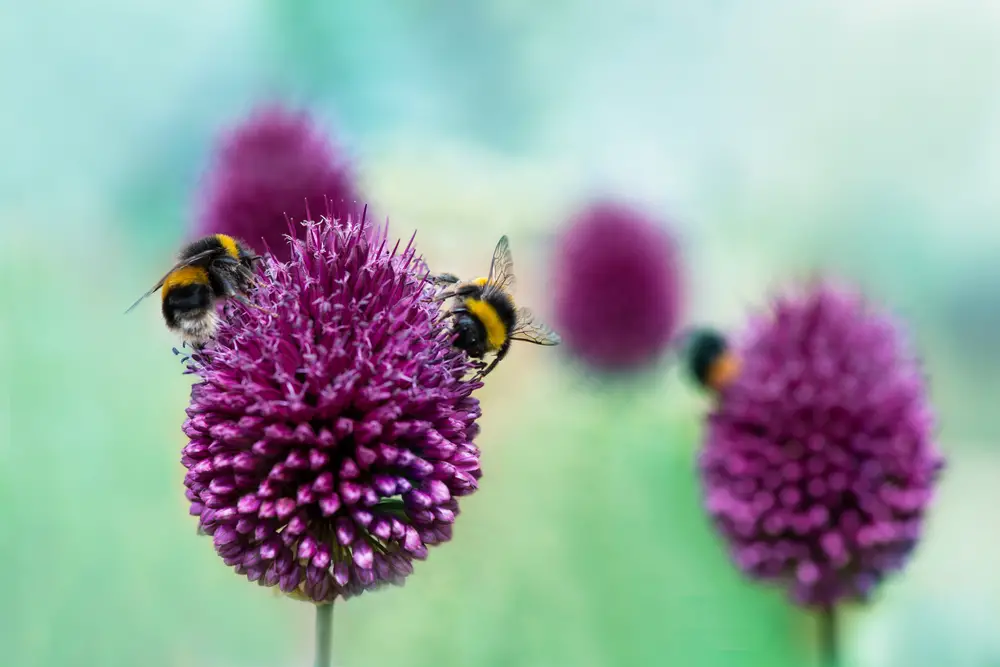Key Takeaways
- The top tips for how to make a bee-friendly garden are planting native plants bees love, planting fruit trees, not using garden chemicals, giving them water, providing them with nesting spots, and giving them alternate food sources.
- Creating a bee-friendly garden is safe if you don’t antagonize them and aren’t allergic.
- You only need to use a small portion of your garden as a bee-friendly one, and you’ll see results in two to three weeks.
It’s more important than ever to help bees thrive. One way to do this is with a bee-friendly garden. But just what is a bee-friendly garden, and how do you make one?
How To Make A Bee-Friendly Garden: 6 Top Tips
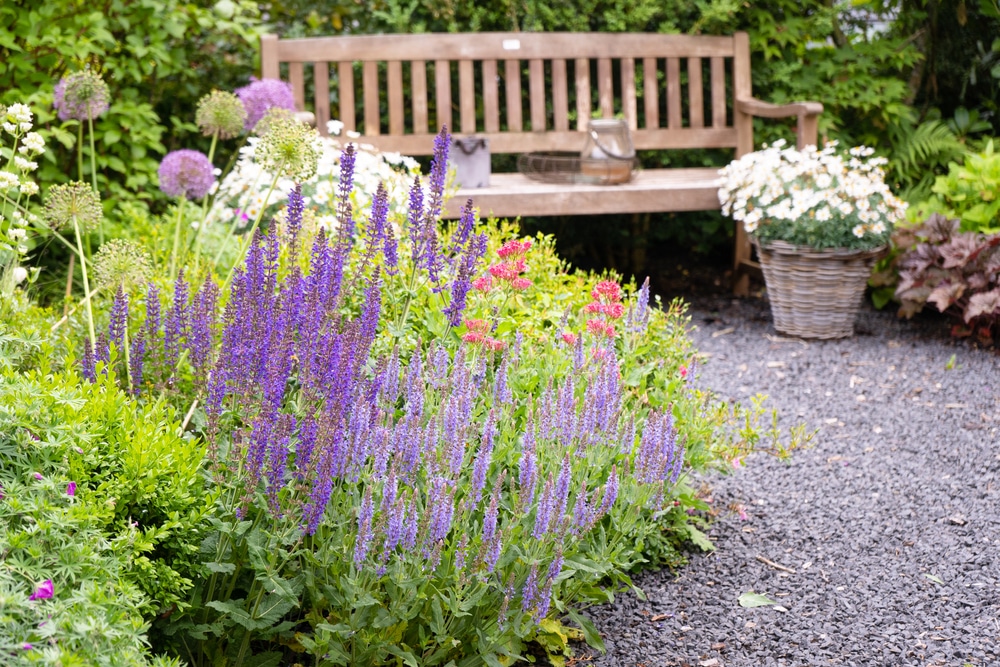
A bee-friendly garden (or any dedicated space within a garden) caters to bees’ needs. The good news is you don’t need to make significant changes; just a few small steps, and your garden will be the main attraction for local bee populations.
Let’s start with planting the kinds of plants bees love.
1 – Use Native Plants Bees Love
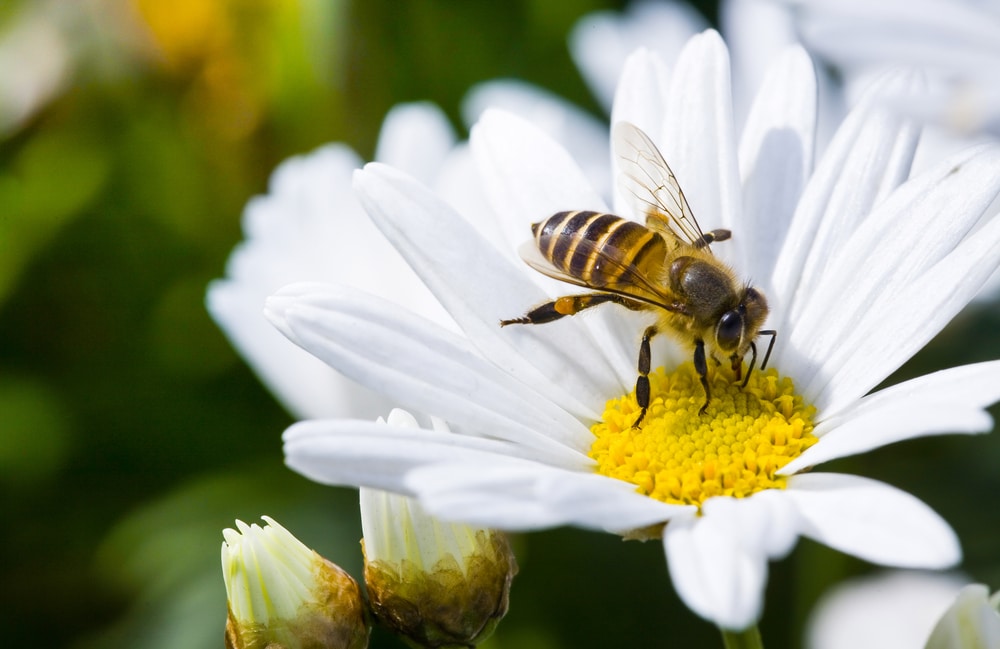
Native plants are plants you can find growing naturally in a given area. This is opposed to exotic plants people have introduced to an area. Studies show bees prefer to forage using native species, so native plants are a great place to start if you create a bee-friendly garden.
What determines a native plant largely depends on where you live, so it’s essential to research what plants are native to your area. While the list below may not apply to all places, I have included a few plant species bees are known to love:
- Lavender
- Foxglove
- Zinnia
- Aster
- Marigold
- Calendula
- Basil
- Coneflower
- Beebalm
- Goldenrod
- Borage
- Salvia
- Sunflower
- Crocus
- Dahlia
It’s also important to keep in mind bees forage for pollen and nectar, so find species that produce plenty of each.
Plant Species And Colors That Attract Bees
Did you know bees cannot see the color red? This is due to how their eyes work, but they are attracted to purple, white, yellow, and blue flowers. So, these color flowers are ideal for drawing in more bees.
Bees can also see ultraviolet light (UV). We cannot, but many flowering plants have UV markers bees use for navigation and finding food. Interestingly, while bees cannot see the color of a red poppy, the black markings on the plant give off UV light, so they’ll still forage on them.
Plant Flowers That Bloom At Different Times Of The Year
Most bees come out of hibernation at the beginning of spring, but we are seeing them emerge earlier because of climate change. This is why it’s important to have plants that will flower early in the year, such as crocus and snowdrop.
On top of this, I recommend getting various plant species that flower at different times of the year anyway because then bees will always have resources in your garden.
Most plants bloom in spring or summer, but after this, you’ll want to look for fall-flowering plants such as asters, sunflowers, goldenrod, salvias, and single-flower dahlias.
2 – Plant Fruit Trees

When most people think about planting for bees, they imagine some of the flowering plant species I’ve discussed. But bees are also partial to fruit trees, so if you have room in your garden, this is a great way to make it bee-friendly.
Not only will the fruit trees bring bees to your backyard and provide them with food, but they’re also great nesting spots. If that isn’t enough, the bees will pollinate the trees, so you’ll get a fantastic fruit yield; it’s a win for both parties!
Some of the best fruit trees for bees include:
- Plum
- Apple and crabapple
- Peach
- Pear
- Cherry
- Fig
- Quince
3 – Avoid Using Garden Chemicals
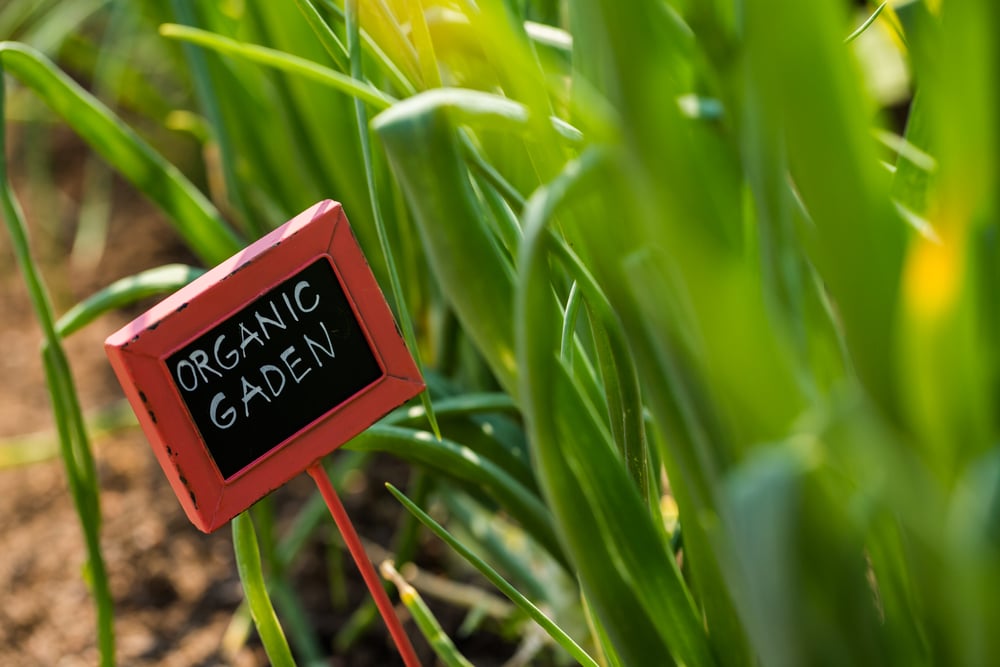
Not using garden chemicals is one of the best things you can do for bees, yourself, and the environment.
Bees face many threats to their survival, and the use of pesticides in domestic gardening and agriculture is one of the most serious.
While pesticides may not directly kill bees, they can have a lasting effect on their memory, which makes it more challenging for them to find viable food sources. Moreover, it’s been proven that pesticides can affect the reproductive and immune systems of bees.
Knowing this, we need to take a stand against these chemicals if we’re going to create a better world for bees. I know a lot of you will be wondering how you’re going to control those garden pests, but there are organic methods for this, such as:
- Use a bottle containing equal parts dish soap and water and spray this on plants affected by pests. It will kill the pests but won’t harm bees.
- Neem oil spray is a great natural alternative to chemical pesticides.
- Hand-picking pests from your plants is time-consuming but also effective.
- Use your hose to spray water onto your plants and wash away pests.
- Place eggshells on the soil around plants that you want to prevent slugs and snails from getting to.
- Introduce natural predators to your garden, like spiders, ladybugs, and lacewings; they will take care of the pest problems for you but will leave bees alone.
4 – Offer A Water Source

Bees need water just like we do. They drink it, and honey bees take it to their hive for temperature regulation. Even a small water source helps bees out with these needs.
A dripping hose, a small bowl of water, or even a bird bath is ideal. However, ensuring the water is shallow, and the bees have somewhere safe to land is essential. Placing pebbles or glass marbles (and ensuring they can’t move) into the water makes for the perfect bee surface.
5 – Provide Nesting Spots (You’ll Need Different Areas For Different Bee Species)

Bees also need somewhere to nest, raise their young, and take shelter. This is why it’s important to consider your local species, as this will better allow you to create suitable nesting sites.
For example, ground-nesting bees like bumblebees, leafcutter bees, and wool-carder bees all nest in the ground. To make a suitable nest, they need to access the soil, so be sure to leave some bare patches. Moreover, tunneling into wet soil will be a problem, so avoid overwatering your lawn.
I’m not saying you shouldn’t water your lawn at all because this isn’t conducive to a healthy lawn. To make a bee-friendly lawn, you can still water the grass at around one to two inches per week.
What’s more, some people may be concerned about having ugly bare patches of soil, which is understandable. While we want to help the bees, we don’t want to sacrifice having a beautiful garden. I would suggest choosing inconspicuous areas. Perhaps a patch under a tree or at the far corner of the lawn that won’t ruin the aesthetic value much.
Honey bees usually live in a human-made hive or a nest made from wax, which is usually suspended in a tree or other structure. Therefore, it is vital to have trees or covered areas where they can build a nest. Although, if you fancy taking up a new hobby as a beekeeper, there’s nothing wrong with considering your own beehive.
Other bee species nest in open stems of plants, so when pruning your garden, be sure to leave some hollow stems. Alternatively, you can install a bee hotel filled with open tunnels bees love to nest in.
You may also know species like carpenter bees bore into wooden structures, but you’ll naturally want them to stay away from your house. So, providing dedicated wood, like a log pile, is a great idea. Fill holes with caulk to prevent the bees from boring into your home.
Letting Your Grass Grow Long Helps Too
Finally, bees love the shelter long grass provides, so you might wish to consider an area of wild lawn. I have done this in my own garden, and it’s been really beneficial for the bees.
I used an area along a fence that measures around 10 feet x 3 feet and have also sowed some wildflower seeds into the grass. I was worried it might look unsightly, but it gives that area of the garden a meadow field look I personally find very attractive.
However, local laws may prevent you from growing your grass too long, so check what’s permitted before you do anything.
6 – Provide Alternative Nutrition When Natural Food Sources Are Low
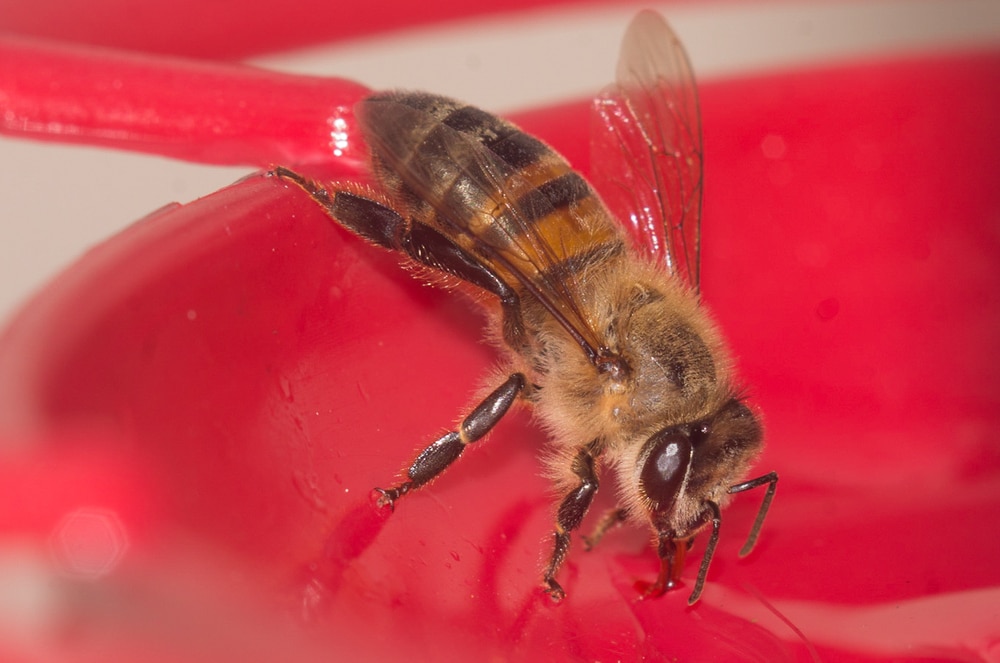
Another significant problem bees face is a lack of resources due to habitat loss. Human activity, such as building developments, has unfortunately primarily caused this. Moreover, if bees emerge too early in spring, many plants won’t yet have flowered, and they’ll struggle to find pollen and nectar.
But when creating your bee-friendly garden, consider installing a bee feeder. While it is possible to buy a bee feeder, you don’t necessarily need anything fancy and can just as easily make your own.
The most simple form is a shallow bowl (with supports for the bees to stand on, such as pebbles or marbles, and making sure they won’t move)) of sugar syrup, which you make using equal parts sugar and water, boil until the sugar dissolves, then let cool. This alternative to nectar will provide bees with the energy they need to keep working hard.
Is It Safe To Have Bees Coming To Your Garden?
Bees sting. That’s a fact we’re all aware of, although many people don’t know there are many species of stingless bees. Moreover, even in stinging species, only females usually possess a stinger.
On top of this, bees are naturally docile creatures that don’t just go around stinging people for the sake of it. In fact, the only time that bees get aggressive is if they feel threatened.
So, if you’re considering making a bee-friendly garden, you must be mindful of these insects and allow them to go about their business without disturbing them. But in most cases, you and they can live together without problems.
That said, I offer a word of caution to anyone with a bee sting allergy. While the bees are unlikely to sting you, there’s always a risk, and if your health is on the line, that’s something worth considering (and talking to your doctor about).
Do You Need A Lot Of Space For A Bee-Friendly Garden?
If you want to, you can dedicate your entire garden to the bees, but you don’t have to. It doesn’t matter how big or small your garden is or what space you have; it’s still possible to create an area for the bees.
In fact, you might even choose just a small corner of the garden where you allow the grass to grow, plant some native flowers, and add a water source. You’ll still be doing your part to protect local bee populations.
However, even if you’re not going to dedicate your whole garden to helping bees, you’ll still need to avoid using chemicals in any part of it. This is because rain can easily transfer those chemicals from one area to another, making any work you do useless.
How Long Will It Take For Your Bee-Friendly Garden To Work?
The larger the space, the more quickly bees will locate your garden. However, even when using a smaller space, you’ll typically start to notice more bees within two to three weeks.
The thing with bees is that once they find a suitable habitat with lots of food, they’ll commit it to memory and keep returning. Moreover, honey bees use a special waggle dance to tell others in their colony where food is. So, once one member notices your efforts, it won’t be long before they tell their hive mates.
When I created my wild lawn area, it took a couple of weeks, and I then started seeing more bees arriving. Now, my garden isn’t crawling with bees, but I certainly notice a lot more than before.
Why Is A Bee-Friendly Garden Important?
Bees are pollinators, one of the main reasons we should protect them. In fact, they (and other pollinators) are responsible for pollinating around 75% of human crops. But if they don’t have the right habitat to survive, they won’t be able to do this.
Bees are also at the mercy of humans in terms of habitat loss. According to experts, since World War II, up to 97% of all meadows have been lost, which has had a massive impact on bees.
Even in areas where natural habitats still exist, they often suffer from fragmentation. This is when habitats split because of things like human development, which means bees have a smaller area to thrive.
Can you imagine if everyone in the world created even just a small area in their garden for bees? The difference would be huge.

